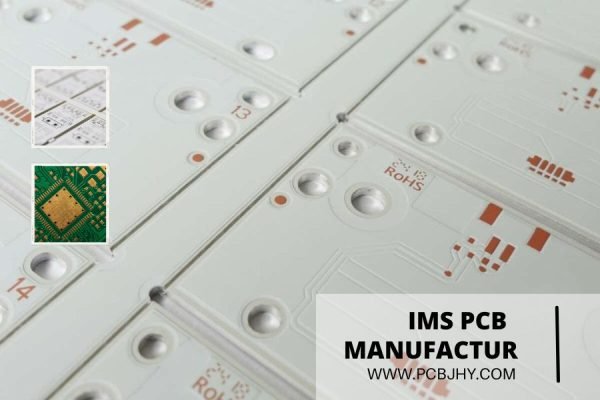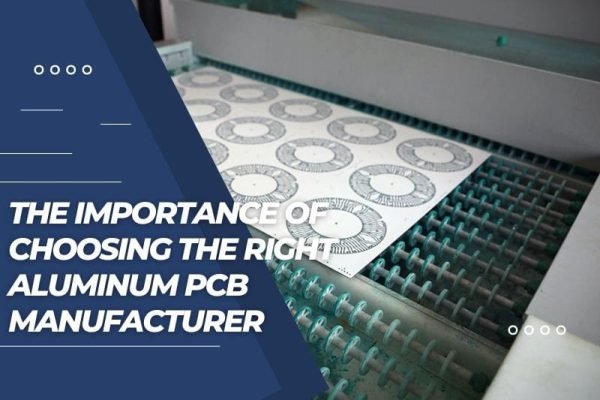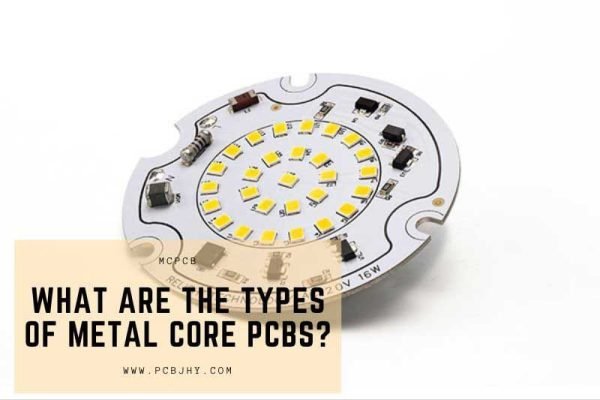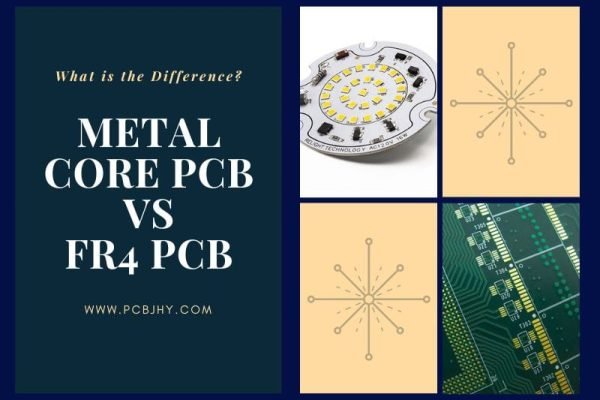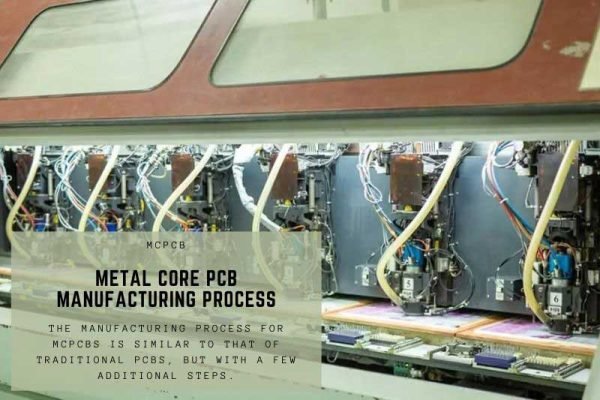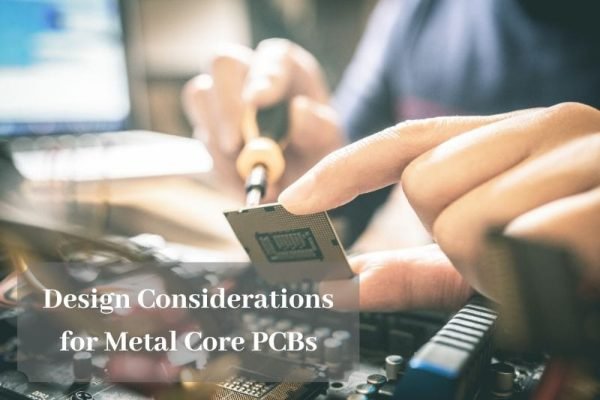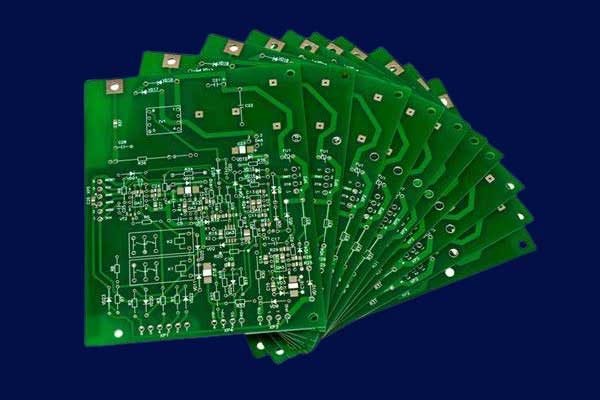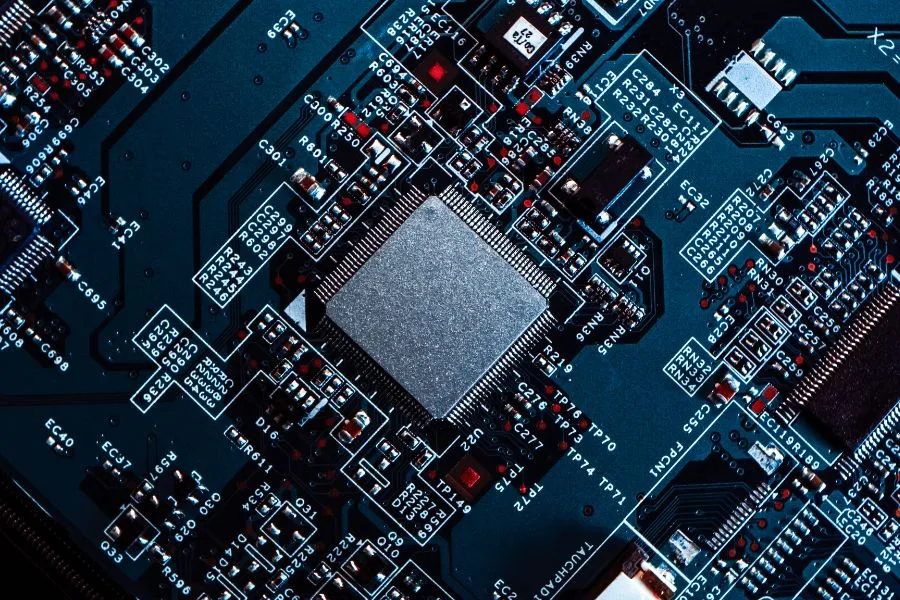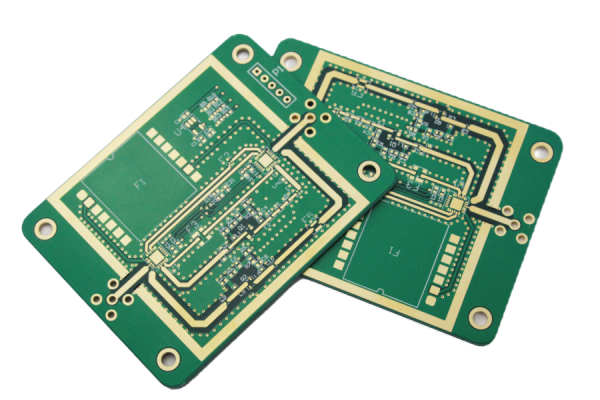Metal Core PCB Manufacturing Service
Double Sided Metal Core PCB
JHYPCB is your best partner of PCB manufacturing, offers high quality metal core PCB fabrication, include single layer metal core PCB, double sided metal core PCB, multilayer metal core PCB, copper base PCB or aluminum PCB from quick turn prototype to production runs.
Double-sided metal core PCBs are printed circuit boards with a metal core for enhanced thermal management. Unlike traditional FR-4 PCBs, which use a fiberglass substrate, metal core PCBs use a layer of metal, typically aluminum, to dissipate heat from the components. This makes them ideal for high-power and high-temperature applications where thermal management is critical. Double-sided metal core PCBs also offer high mechanical strength and reduced component count, making them popular in the automotive, aerospace, and LED lighting industries.
What is Double Sided Metal Core PCB?
A double-sided metal core PCB is a printed circuit board with a metal core layer sandwiched between two copper layers. The metal core, usually made of aluminum, acts as a heat sink to dissipate heat generated by high-power components on the board. The copper layers on either side of the metal core provide electrical connections between components.
Double-sided metal core PCBs are useful in high-power and high-temperature applications where thermal management is critical. The metal core provides a highly efficient thermal path for heat dissipation, resulting in improved component reliability and reduced risk of thermal damage. In addition, using a metal core can help reduce the overall size and complexity of the circuit, as fewer thermal management components are required. This makes double-sided metal core PCBs an attractive option for automotive, aerospace and LED lighting industries, where space and weight constraints are often a concern.

Double Sided Metal Core PCB Structure
A double-sided metal core PCB comprises three layers: a metal core layer sandwiched between two copper layers.

- Metal core layer: The metal core layer is the central layer of the PCB and is typically made of aluminum. The main function of the metal core is to provide a highly efficient thermal path for dissipating heat generated by high-power components on the board. The metal core layer also provides mechanical rigidity to the PCB and helps reduce the circuit’s overall weight and size.
- Copper layer 1: The first copper layer is bonded to one side of the metal core layer and provides electrical connections between components on that side of the board. This layer may also contain a ground plane, which helps to reduce electromagnetic interference (EMI) and improves signal integrity. In addition, this layer may include components such as surface mount devices (SMDs), through-hole components, and traces to connect them.
- Copper layer 2: The second copper layer is bonded to the other side of the metal core layer and provides electrical connections between components on that side of the board. This layer may also contain a power plane, which helps distribute power to board components. Similar to copper layer 1, this layer may also include SMDs, through-hole components, and traces to connect them.
Double Sided Metal Core PCB Applications
Double-sided metal core PCBs are widely used in a variety of industries, including:
- Automotive: In the automotive industry, double-sided metal core PCBs are used in engine control units (ECUs), power modules, and lighting systems. The high thermal conductivity of the metal core layer helps to dissipate heat generated by the high-power components in these systems, improving their reliability and longevity. In addition, the reduced component count and size of the PCBs help to save space in the cramped confines of modern vehicles.
- Aerospace: In the aerospace industry, double-sided metal core PCBs are used in avionics, satellite communications, and radar systems. The high thermal conductivity of the metal core layer is essential for dissipating heat generated by the high-power components in these systems, as well as providing resistance to temperature extremes and vibration. The reduced component count and size of the PCBs also help to save space and weight, which is critical in aerospace applications.
- LED lighting: In the LED lighting industry, double-sided metal core PCBs are used in high-power LED drivers and lighting modules. The high thermal conductivity of the metal core layer helps to dissipate heat generated by the LEDs, improving their efficiency and longevity. In addition, the reduced size and weight of the PCBs help to make LED lighting systems more compact and portable.
The advantages of double-sided metal core PCBs in these industries include improved thermal management, high mechanical strength, and reduced component count and size. These advantages help to improve the reliability and longevity of high-power electronic systems, while also saving space and weight in compact applications.
According to a recent report by MarketsandMarkets, the global market for metal core PCBs is expected to grow from USD 524.4 million in 2018 to USD 738.5 million by 2023, at a compound annual growth rate (CAGR) of 7.1% during the forecast period.
What are the Benefits of Double-sided Metal Core PCB?
There are several benefits of double-sided metal core PCBs:
- Efficient thermal management: The metal core layer in a double-sided metal core PCB provides a highly efficient thermal path for dissipating heat generated by high-power components on the board. This helps to improve the reliability and longevity of electronic systems by reducing the risk of thermal damage to components.
- High mechanical strength: The metal core layer also provides mechanical rigidity to the PCB, improving its overall strength and durability. This is particularly important in applications where the PCB is subjected to mechanical stress, such as in automotive or aerospace applications.
- Reduced component count and size: The use of a metal core layer in a double-sided PCB can help to reduce the overall size and complexity of the circuit, as fewer thermal management components are required. This makes the PCB more compact and lightweight, which is important in applications where space and weight are limited.
- Improved signal integrity: Double-sided metal core PCBs can also feature copper layers with ground or power planes, which help to reduce electromagnetic interference (EMI) and improve signal integrity. This is particularly important in applications where high-frequency signals are being transmitted, such as in communication systems.
- Low thermal expansion coefficient: The metal core has a lower thermal expansion coefficient than FR-4 PCBs, which reduces the risk of stress and cracking due to temperature changes.
Disadvantages of Double-Sided Metal Core PCB
While double-sided metal core PCBs offer several advantages, they also have some disadvantages to consider, including:
- Higher cost: Double-sided metal core PCBs are generally more expensive than traditional FR-4 PCBs due to the additional cost of the metal core.
- Limited flexibility: The metal core provides limited flexibility, making it more difficult to design and manufacture double-sided metal core PCBs.
- Limited availability: Double-sided metal core PCBs are not as widely available as traditional FR-4 PCBs, making them more difficult to source.
Design of Double-Sided Metal Core PCB
Designing double-sided metal core PCBs requires careful consideration of a number of factors, including thermal management, signal integrity, and mechanical strength. Here are some key design considerations:
- Thermal management: Double-sided metal core PCBs require careful attention to thermal management, as excessive heat can damage components and degrade signal performance. This can be achieved through careful placement of components, routing of power and ground planes, and the use of thermal vias to transfer heat away from sensitive areas.
- Signal integrity: Double-sided metal core PCBs require careful consideration of signal integrity, as the metal core can interfere with signals and cause noise and distortion. This can be addressed through careful placement of components and signal traces, the use of ground planes to shield signals, and the use of signal.
- Mechanical strength: Double-sided metal core PCBs require careful consideration of mechanical strength, as the metal core provides rigidity but limited flexibility. This can be addressed through careful placement of mounting holes, reinforcement of critical areas, and the use of a suitable substrate material.
- Manufacturing constraints: Double-sided metal core PCBs may require special manufacturing techniques, such as drilling and plating of vias, to ensure proper heat transfer and signal integrity. This can add to the cost and lead time of production.
Manufacturing of Double-Sided Metal Core PCB
The manufacturing process for double-sided metal core PCBs is similar to that of traditional PCBs, with some additional steps to ensure proper thermal management. Here are some key manufacturing steps:
- Layer preparation: The metal core is cleaned and prepared for bonding with copper layers.
- Copper bonding: The copper layers are bonded to the metal core using a thermal bonding process, such as hot pressing or laminating.
- Drilling and plating: Vias are drilled and plated to provide connections between the top and bottom copper layers.
- Etching and solder mask: The top and bottom copper layers are etched to form the desired circuit pattern, and a solder mask is applied to protect the copper from oxidation and corrosion.
- Assembly and testing: Components are mounted onto the PCB and tested for functionality and reliability.
Metal Core PCB Manufacturer
If you need high-quality metal core PCB fabrication services, look no further than our company. We offer various metal core PCB solutions, including prototypes, single-sided, double-sided, and multilayer PCBs. With our advanced equipment, skilled technicians, and commitment to quality, we can produce metal core PCBs that meet even the most demanding specifications.
Our team is dedicated to providing exceptional customer service and support, from design consultation to final product delivery. We work closely with our clients to understand their unique needs and requirements and strive to exceed their expectations with every project we undertake.
Whether you’re looking for a small metal core PCB prototype or a large-scale production run, we have the expertise and resources to do the job right. Contact us today to learn more about our metal core PCB fabrication services and how we can help you bring your electronic projects to life.

